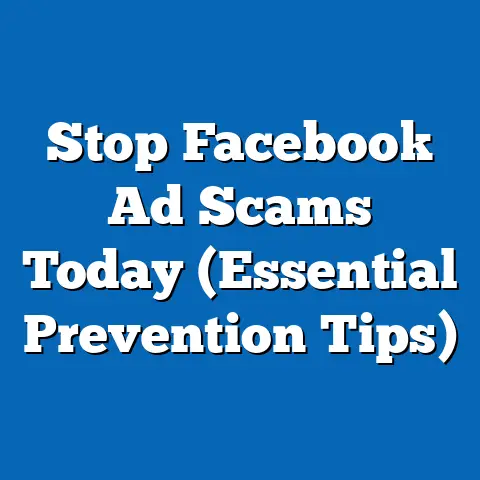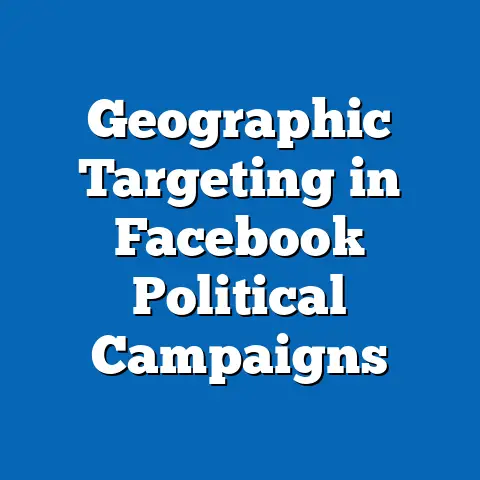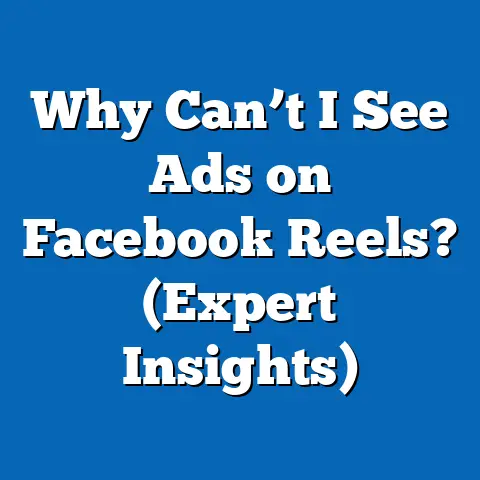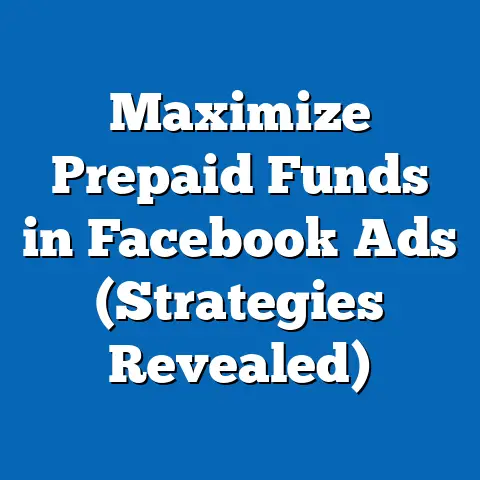Maximize ROI with Separate Facebook & Instagram Ads (Strategic Insight)
Have you ever felt like you’re shouting into a void with your marketing efforts? You pour your heart and soul (and budget!) into crafting what you think are killer social media campaigns, only to be met with a whimper of sales? I’ve been there. It’s incredibly frustrating, especially when you see competitors thriving. In today’s ultra-competitive digital landscape, effective advertising isn’t just an option; it’s a lifeline. But throwing money at generic ads that blanket both Facebook and Instagram is like using a shotgun to hunt a specific bird – you might hit something, but you’re likely wasting a lot of ammunition.
The truth is, Facebook and Instagram, despite being under the Meta umbrella, are fundamentally different beasts. To truly maximize your return on investment (ROI), you need to treat them as such. This isn’t just about tweaking a headline here or there; it’s about crafting entirely separate strategies tailored to each platform’s unique audience and environment.
This article will serve as your guide to understanding why and how separating your Facebook and Instagram ad campaigns can unlock a whole new level of ROI. I’ll walk you through the strategic insights and actionable steps you need to take to transform your advertising from a shot in the dark to a laser-focused, revenue-generating machine. Let’s dive in!
Understanding the Platforms
Facebook and Instagram are both social media giants, but their ecosystems are vastly different. Think of it like comparing a bustling city center (Facebook) to a curated art gallery (Instagram).
Facebook, with its massive user base, is a melting pot of demographics, interests, and intentions. People come to Facebook to connect with friends and family, join groups, stay updated on news, and discover new products and services. According to Statista, as of January 2024, Facebook boasts over 3 billion active users worldwide. This sheer volume makes it a powerful platform for reaching a broad audience. However, it also means your message needs to cut through a lot of noise.
Instagram, on the other hand, is all about visuals. It’s a platform where users showcase their lives, find inspiration, and discover new trends. The audience tends to be younger and more visually oriented. Hootsuite reports that over 500 million people use Instagram Stories every day, highlighting the platform’s emphasis on ephemeral, visual content. This visual focus makes Instagram ideal for brands with strong aesthetics and engaging visuals.
Takeaway: Facebook and Instagram attract different audiences with different intentions. Understanding these differences is crucial for crafting effective ad campaigns.
The Importance of Audience Segmentation
Audience segmentation is the cornerstone of effective digital marketing. It’s about dividing your target market into distinct groups based on shared characteristics, needs, and behaviors. This allows you to create highly targeted ads that resonate with each segment, increasing engagement and conversions.
Facebook excels in granular targeting thanks to its wealth of user data. You can target users based on demographics (age, gender, location), interests (hobbies, activities, pages they like), behaviors (purchase history, website visits), and even life events (new job, marriage). This level of detail allows you to create incredibly specific audience segments.
Instagram, while also offering targeting options, leans more towards visual appeal and aspirational content. While you can still target based on interests and behaviors, the platform’s strength lies in its ability to connect with users through visually compelling ads that align with their aesthetic preferences.
For example, let’s say you’re selling eco-friendly cleaning products. On Facebook, you could target users interested in “sustainable living,” “organic products,” and “zero waste.” You could also target parents concerned about the chemicals in traditional cleaning products. On Instagram, you’d focus on creating visually stunning images and videos showcasing your products in beautiful, minimalist homes. You might partner with eco-conscious influencers to promote your brand and reach their followers.
I once worked with a client selling high-end coffee beans. We initially ran the same ads on both platforms, targeting coffee lovers in general. The results were underwhelming. By segmenting the audience – targeting serious coffee aficionados on Facebook with detailed information about bean origins and roasting processes, and focusing on visually appealing coffee-making rituals on Instagram – we saw a significant boost in engagement and sales.
Takeaway: Effective audience segmentation allows you to tailor your ads to the specific needs and preferences of different user groups on Facebook and Instagram, leading to higher engagement and conversions.
Crafting Platform-Specific Content
Now that you understand the differences between Facebook and Instagram and the importance of audience segmentation, it’s time to talk about content. The content you create for each platform should reflect its unique environment and user expectations.
On Facebook, longer-form content, detailed product descriptions, and community engagement are key. Think blog posts, articles, customer testimonials, and interactive contests. Video ads also perform well on Facebook, especially those that tell a story or provide valuable information.
Instagram, on the other hand, is all about visual storytelling. High-quality images, engaging videos, and captivating Stories are essential. Think behind-the-scenes glimpses, product demos, influencer collaborations, and visually stunning lifestyle shots.
Ad formats also differ on each platform. Facebook offers a wide range of ad formats, including image ads, video ads, carousel ads, collection ads, and lead generation ads. Instagram focuses on image ads, video ads, carousel ads, Stories ads, and Reels ads.
For instance, a clothing brand might use carousel ads on Facebook to showcase different outfits and link to their website. On Instagram, they might use Stories ads to offer exclusive discounts and promotions to their followers. They could also partner with fashion influencers to create visually stunning Reels showcasing their latest collection.
I recall a campaign where we were promoting a new software product. On Facebook, we created a detailed video explaining the software’s features and benefits. On Instagram, we created a series of short, visually appealing GIFs showcasing the software’s user interface. The Facebook video generated a lot of leads, while the Instagram GIFs drove brand awareness and engagement.
Takeaway: Tailor your content to the specific platform, leveraging the strengths of each format and aligning with user expectations for maximum impact.
Monitoring and Analyzing Performance
You can’t improve what you don’t measure. Tracking ad performance separately for Facebook and Instagram is crucial for understanding what’s working and what’s not.
Key Performance Indicators (KPIs) will vary depending on your campaign goals, but some common metrics to track include:
- Reach: The number of unique users who saw your ad.
- Impressions: The number of times your ad was displayed.
- Engagement Rate: The percentage of users who interacted with your ad (likes, comments, shares, clicks).
- Click-Through Rate (CTR): The percentage of users who clicked on your ad.
- Conversion Rate: The percentage of users who completed a desired action (e.g., made a purchase, signed up for a newsletter).
- Cost Per Acquisition (CPA): The cost of acquiring a new customer or lead.
- Return on Ad Spend (ROAS): The revenue generated for every dollar spent on advertising.
Facebook Ads Manager provides a wealth of data and analytics to help you track these metrics. You can segment your data by platform, audience, ad format, and other variables to gain deeper insights into your campaign performance.
For example, you might find that your Instagram ads have a higher engagement rate but a lower conversion rate than your Facebook ads. This could indicate that your Instagram ads are effective at driving brand awareness but need to be optimized for conversions.
I once had a client who was running the same lead generation ads on both platforms. We noticed that the Facebook ads were generating significantly more leads at a lower cost. After analyzing the data, we realized that the Facebook audience was more receptive to the detailed information we were providing in the ad copy. We decided to shift more of our budget to Facebook and focus on optimizing the Instagram ads for brand awareness instead.
Takeaway: Regularly monitor and analyze your ad performance separately for Facebook and Instagram to identify areas for improvement and optimize your campaigns for maximum ROI.
Budget Allocation Strategies
Once you have a solid understanding of your ad performance on each platform, it’s time to develop a budget allocation strategy. This involves deciding how to distribute your advertising budget between Facebook and Instagram based on their respective performance and potential.
There’s no one-size-fits-all approach to budget allocation. It depends on your specific goals, target audience, and product or service. However, some general guidelines include:
- Start with a Test Budget: Allocate a small portion of your budget to test different ad formats, targeting options, and creative elements on each platform.
- Prioritize High-Performing Platforms: Allocate a larger portion of your budget to the platform that consistently delivers the best results in terms of engagement, conversions, and ROI.
- Consider Audience Overlap: If there’s significant overlap between your Facebook and Instagram audiences, you may need to adjust your budget accordingly to avoid ad fatigue.
- Be Flexible: Continuously monitor your ad performance and reallocate your budget as needed to maximize your ROI.
Flexible budgeting is crucial. Don’t be afraid to shift funds from one platform to another based on real-time performance data. If you see that your Instagram ads are suddenly performing better than your Facebook ads, don’t hesitate to increase your Instagram budget and decrease your Facebook budget.
I’ve seen countless examples of businesses that dramatically improved their ROI by simply reallocating their ad spend based on performance data. One client, a local restaurant, was initially spending equal amounts on Facebook and Instagram ads. After analyzing their data, we discovered that the Facebook ads were generating significantly more reservations. We shifted the majority of their budget to Facebook, resulting in a 30% increase in overall reservations.
Takeaway: A flexible budget allocation strategy, informed by data and performance insights, is essential for maximizing your ROI on Facebook and Instagram.
Conclusion
In conclusion, treating your Facebook and Instagram ads as distinct entities is not just a best practice; it’s a necessity for maximizing your ROI in today’s competitive digital landscape. By understanding the unique characteristics of each platform, segmenting your audience effectively, crafting platform-specific content, monitoring and analyzing performance, and implementing a flexible budget allocation strategy, you can transform your advertising from a cost center to a profit center.
Don’t let your advertising efforts fall flat. Rethink your current strategies and embrace the power of tailored campaigns on Facebook and Instagram. Start by analyzing your current ad performance, segmenting your audience, and experimenting with different ad formats and creative elements.
The opportunity to unlock a whole new level of ROI is within your reach. Take the first step today and start crafting separate strategies for Facebook and Instagram. Your bottom line will thank you for it!





